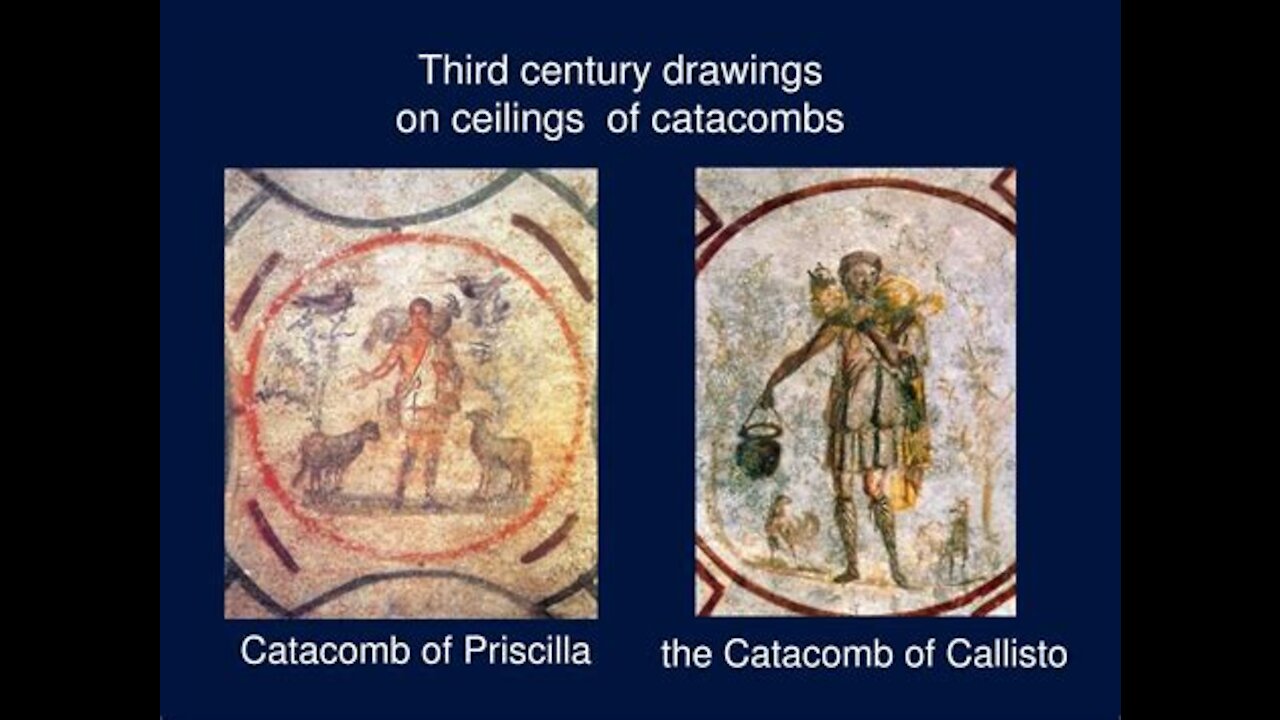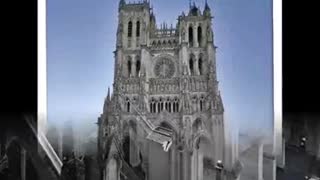Premium Only Content

Catholic Art What is it? I
I. Definition of Art in a general sense and art versus literature, music, smaller distinctions
Any definition of art has to square with the following uncontroversial facts: (i) entities (artifacts or performances) intentionally endowed by their makers with a significant degree of aesthetic interest, often greatly surpassing that of most everyday objects, first appeared hundreds of thousands of years ago and exist in virtually every known human culture (Davies 2012)
Platonic view, which we will revisit when we talk about beauty and Thomas Aquinas, “Plato holds in the Republic and elsewhere that the arts are representational, or mimetic (sometimes translated “imitative”). Artworks are ontologically dependent on, imitations of, and therefore inferior to, ordinary physical objects. Physical objects in turn are ontologically dependent on, and imitations of, and hence inferior to, what is most real, the non-physical unchanging Forms. Grasped perceptually, artworks present only an appearance of an appearance of the Forms, which are grasped by reason alone. Consequently, artistic experience cannot yield knowledge. Nor do the makers of artworks work form knowledge. Because artworks engage an unstable, lower part of the soul, art should be subservient to moral realities, which, along with truth, are more metaphysically fundamental and, properly understood, more humanly important than, beauty. The arts are not, for Plato, the primary sphere in which beauty operates. The Platonic conception of beauty is extremely wide and metaphysical: there is a Form of Beauty, which can only be known non-perceptually, but it is more closely related to the erotic than to the arts.”
Percept creation interaction through the sense of the material world. Feel the table, solidity, recollect the sensation later on, phantasm.
Artistic cannot yield knowledge. Subservient to moral truth. Leaves perception without effort, subservient to morality due damage to human mind. Corrosive to human person without caution.
Aquinas will elevate the idea of beauty from erotic to the idea in the Mind of the Creator. Aquinas built on Plato but does not stay at the level of the Ancients who did not have the revelation of Christ to guide them.
Contrast to science which is a systematic process of acquiring knowledge which is repeatable and predictive. Aristotle built on the understanding of Socrates who applied philosophical inquiry to human matters. Aristotle using these insights of Socrates would state that “man knows a thing scientifically "when he possesses a conviction arrived at in a certain way, and when the first principles on which that conviction rests are known to him with certainty" . Aristotle applied his keen perception to the natural world where his thoughts would hold for millennia. Not because of dogmatic constraints but because his observations provided the best analysis of the data at the time. Aquinas knew this too.
Art is a product of Leisure. Art in whatever presentation takes reflective and creative thought. One of the aspects of the cave paintings is that our ancestors carved out the time in their hunting and gathering world to express those ideas important to them.
Modern time slaves of utilitarian, amount of leisure lessened reflected in our art.
Art reflective thought. Slaves to our appetite lose ability to ponder and wonder. Visible in lack of art.
-
 7:42
7:42
Fides et Ratio
1 year agoMicah Reading Proverbs 10
44 -
 6:13
6:13
Cafeteria Catholics Come Home
3 years agoBiggest Catholic Churches
68 -
 11:52
11:52
Cafeteria Catholics Come Home
3 years ago $0.03 earned5 Must-See Catholic Movies
1161 -
 DVR
DVR
Welcome to the Rebellion Podcast
21 hours ago $1.55 earnedHe Wore a Blue Suit - WTTR Podcast Live 4/28
12.7K1 -
 1:54:43
1:54:43
Game On!
17 hours ago $4.18 earnedMel Kiper believes Shedeur Sanders will WIN a SUPER BOWL for the Browns!
24.7K1 -
 9:20
9:20
Tactical Advisor
1 day agoNew Shadow 2 Carry | CZ Compact Upgrade (FIRST LOOK)
119K25 -
 14:05
14:05
WhaddoYouMeme
19 hours ago $3.14 earnedThe Dangerous Lie He Told MILLIONS About Christianity
34.4K29 -
 15:47
15:47
Film Threat
13 hours agoSTAR WARS EPISODE III: REVENGE OF THE SITH RE-RELEASE | Film Threat Review
31K3 -
 6:01
6:01
MudandMunitions
16 hours agoGriffin Armament 3X Prism Sight GPS3X Review & Range Test NY LEGAL AR-15 DIALED IN
31.4K4 -
 4:53
4:53
The Official Steve Harvey
16 hours ago $1.10 earned🎬 🤣 🎙️ Stay ready so you ain’t gotta get ready! 🔥 Watch Steve keep it ALL the way real on Prime Cuts
28.6K8